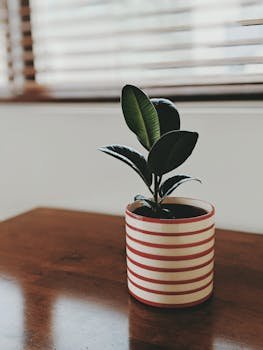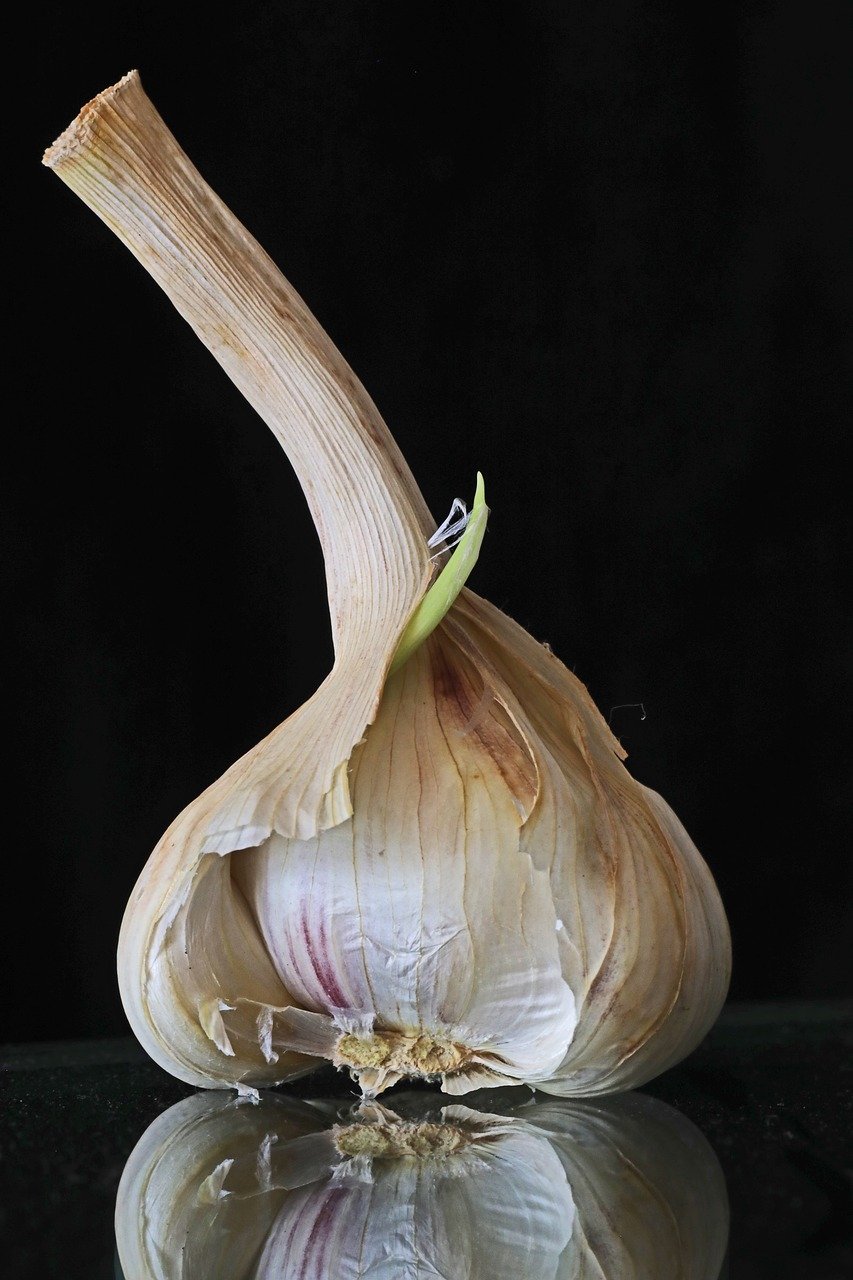
For those living in the Pacific Northwest, finding the right houseplants can be a challenge. The region’s unique climate demands plants that thrive with minimal care. These are my favorite five low-maintenance houseplants for 2025 offering beauty and ease, making them perfect choices for anyone wanting greenery without the fuss.
These plants not only enhance home aesthetics but also improve indoor air quality. They require less frequent watering and can adapt well to indoor environments. This allows plant owners to enjoy nature’s beauty without the stress of constant upkeep.
Whether a novice or an experienced plant lover, these plants will suit various lifestyles. With the right choice, anyone can bring a touch of green into their home with minimal effort.
Benefits of Low-Maintenance Houseplants
Improving Air Quality
Houseplants can significantly enhance indoor air quality. Many houseplants naturally filter out toxins like formaldehyde and benzene. For example, plants like snake plants and peace lilies are effective at absorbing harmful substances.
Better air quality leads to a healthier environment. Increasing oxygen levels can improve brain function and overall health. People living in homes with plants often experience fewer respiratory issues.
Adding plants to living spaces is a simple way to create a fresher atmosphere. This can be especially beneficial for those living in urban areas. Improved air quality contributes to a more comfortable and inviting home.
Enhancing Mental Well-Being
Houseplants can have a positive impact on mental health. Studies show that having greenery indoors can reduce stress and anxiety. It also helps improve focus and productivity.
Caring for plants can provide a sense of responsibility and routines. This connection to nature often elevates mood.
Additionally, the presence of plants in a home can create a calming atmosphere. Their greenery and beauty contribute to a peaceful environment. As a result, individuals may feel more relaxed and centered in their daily lives.
Decorative Purposes
Houseplants are also great for enhancing the aesthetic of any space. They come in various shapes, sizes, and colors. This variety allows homeowners to choose plants that fit their personal style.
Plants like pothos and ZZ plants are perfect for brightening corners or shelves. They add life and vibrancy to dull areas in a home.
In addition, many low-maintenance plants can thrive in low-light conditions. This flexibility makes it easy to decorate with them in different rooms. Using plants as decor is an effective way to create a warm and inviting atmosphere.
Considerations for Selecting Houseplants
Choosing the right houseplants requires careful thought on various factors. Key aspects include lighting, watering, temperature, humidity, and available space. Understanding these elements helps ensure a healthy plant environment.
Lighting Needs
Different houseplants require varying amounts of light. Some thrive in bright, indirect sunlight, while others prefer low-light conditions. For example, snake plants and ZZ plants can tolerate darker spaces.
It’s important to assess the light situation in the home. Observe how much natural light each room receives throughout the day. Using window treatments can help control light levels.
Grow lights are a good option for rooms that lack sunlight. These can support plants that need more light. Proper light exposure is crucial for plant health to encourage growth and flowering.
Watering Requirements
Water needs can drastically differ among plant types. Most houseplants do well with moderate watering. Overwatering can lead to root rot, a common issue for many indoor plants.
A good method is to check the soil moisture. A finger inserted an inch deep can reveal if a plant needs water. Plants like pothos prefer their soil to dry out completely between watering.
Seasonal changes can also affect watering frequency. During winter, many plants require less water. Monitoring each plant’s specific needs helps prevent problems related to improper watering.
Temperature and Humidity Considerations
Most houseplants thrive in average room temperatures between 60°F and 75°F. Temperature extremes can stress plants. Protect them from drafts, heaters, and direct air conditioning.
Humidity affects many houseplants. Some, like ferns, prefer higher humidity levels. Others tolerate drier air, such as succulents.
Using a humidifier or placing a tray of water near plants can help increase moisture. Always check the specific humidity needs of each type. This helps create the right environment for healthy growth.
Space Constraints
When selecting houseplants, available space is crucial. Larger plants require more room for growth. Smaller pots are ideal for limited spaces, such as apartments or desks.
Consider vertical space as well. Hanging plants or wall-mounted planters utilize space creatively. Using shelves can help display smaller plants while saving floor area.
Top 5 Low-Maintenance Houseplants for PNW
Pothos (Epipremnum Aureum)
Pothos is known for its heart-shaped leaves and trailing vines. It is easy to grow in a variety of lighting conditions, from low light to bright indirect light.
This plant prefers to dry out between waterings, making it simple to care for. Pothos can also help purify the air, adding to its appeal.
A common way to display Pothos is in hanging baskets or on shelves. Its ability to adapt to different environments makes it a favorite for many plant lovers.
Snake Plant (Sansevieria)
The Snake Plant is hardy and can tolerate neglect. It thrives in low light but can also handle bright indirect light.
This plant needs very little water, only requiring a drink every few weeks. Its sturdy leaves grow upright, adding a modern touch to any space.
Additionally, the Snake Plant filters toxins from the air. This makes it both beautiful and beneficial for indoor environments.
ZZ Plant (Zamioculcas Zamiifolia)
The ZZ Plant is popular for its shiny, dark green leaves. It can survive in low light and requires minimal water, which is ideal for busy individuals.
This plant can go for long periods without water thanks to its thick stems and roots that store moisture.
The ZZ Plant grows slowly but steadily, making it perfect for those who want greenery without constant upkeep. It is also safe for pets, adding to its charms as an indoor plant.
Spider Plant (Chlorophytum Comosum)
The Spider Plant is well-known for its arching leaves and baby plantlets that dangle down. It adapts well to different lighting conditions, though it prefers bright, indirect light.
Watering is simple, as it only needs a thorough soak when the top inch of soil is dry. This plant is also an excellent air purifier.
Spider Plants are easy to propagate, allowing owners to share cuttings with friends. Its playful look adds life to any room.
Peace Lily (Spathiphyllum)
The Peace Lily is celebrated for its elegant white flowers. It thrives in low light, making it well-suited for indoor spaces with less sunlight.
This plant requires weekly watering but will droop slightly to let owners know when it needs water.
Besides its beauty, the Peace Lily is effective at removing indoor pollutants. Its soft petals and greenery create a peaceful atmosphere in homes.
Care Instructions for the Top 5 Houseplants
Taking care of houseplants is straightforward when you know the basics. Proper watering, feeding, and maintenance are key for the health of these plants.
Watering and Feeding
Most low-maintenance houseplants prefer to dry out between waterings. Checking the soil’s top inch is a good method to determine if it needs water. When the soil feels dry, give the plant a thorough watering until it drains out the bottom.
For feeding, a balanced houseplant fertilizer once every month during the growing season works well. Use half the recommended dose to avoid over-fertilizing. Certain plants may not need feeding at all during winter months when they are not actively growing.
Pruning and Cleaning
Pruning helps keep plants healthy and promotes new growth. For many low-maintenance varieties, just remove any dead or yellowing leaves as needed. This should be done about once a month or when the leaves become unsightly.
Cleaning the leaves is also important. Dust can block sunlight and affect the plant’s health. Wipe leaves with a damp cloth every few weeks. This simple task ensures that leaves can photosynthesize properly.
Repotting and Soil Preferences
Repotting is essential when roots outgrow their container. Most houseplants will need repotting every 1-2 years. Choose a pot that is one size larger with good drainage holes.
Low-maintenance plants typically thrive in well-draining soil. A mix of potting soil with perlite or sand can improve drainage. Be attentive to specific plant needs, as some may prefer a different type of soil for optimal growth.
Common Issues and Solutions
Low-maintenance houseplants can still face problems. Identifying these issues early helps ensure healthy growth. Here are some common concerns and practical solutions.
Pest Infestations
Pests are a common issue for houseplants. Aphids, spider mites, and mealybugs can invade. Regularly check leaves and stems for tiny insects.
Prevention Tips:
- Inspect new plants before bringing them home.
- Isolate any infested plants to prevent spreading.
- Use insecticidal soap or neem oil for treatment.
Cleaning leaves with a damp cloth can also deter pests. For severe infestations, consider removing the affected parts. Keeping plants healthy and thriving will make them less attractive to pests.
Disease Prevention
Fungal diseases can affect houseplants, often due to excess moisture. Leaf spots and root rot are common in humid conditions. To prevent these issues, it’s vital to ensure proper care.
Protection Strategies:
- Water only when the topsoil is dry.
- Avoid wetting leaves during watering.
- Choose well-draining soil and pots with drainage holes.
Good air circulation helps reduce the risk of mold and fungus. Regularly clear away dead leaves and debris to maintain a healthy environment.
Troubleshooting Poor Growth
Sometimes plants may not grow as expected. Causes can include inadequate light, poor soil, or wrong watering practices. Recognizing the signs of poor growth is essential.
Key Indicators:
- Yellowing leaves can indicate overwatering.
- Stunted growth may mean a need for more light.
- Drooping leaves can signal underwatering.
To boost growth, adjust light exposure and check soil quality. Fertilizing at the appropriate times also supports healthy development. Keeping a consistent care routine is important for optimal growth.
Final Thoughts
Choosing the right houseplants can make home care much easier. Low-maintenance plants are ideal for busy lifestyles.
The Pacific Northwest has a unique climate that supports many resilient plant species. The five plants highlighted are known for their ability to thrive with minimal effort.
Plant Options
- Snake Plant
- Tolerates low light.
- Needs watering every few weeks.
- Pothos
- Grows well in various lighting conditions.
- Only requires water when soil is dry.
- ZZ Plant
- Survives in low light and drought.
- Rarely needs repotting.
- Spider Plant
- Adapts to many environments.
- Pruning boosts growth.
- Peace Lily
- Prefers indirect light.
- Should be watered when leaves droop.
These plants provide beauty and freshness without demanding constant attention. They can enhance indoor spaces while being forgiving of occasional neglect.
Selecting low-maintenance plants can lead to a more enjoyable and stress-free experience. It allows individuals to appreciate nature without a large time commitment.

